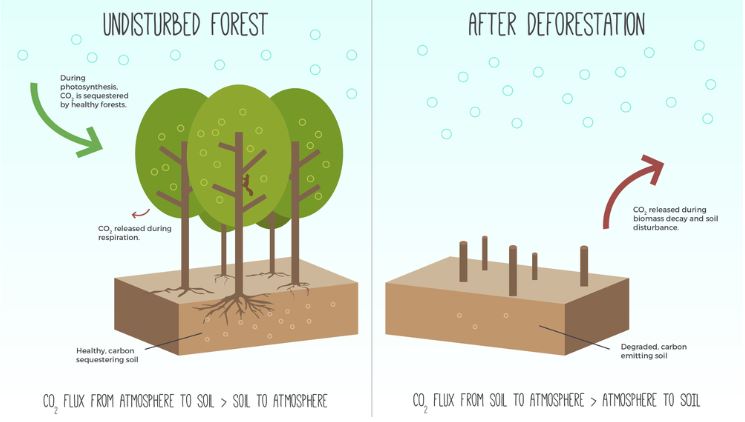The 2017-18 School Year is the 2nd year of our NOAA sponsored “Climate Resiliency Fellows” Program. Our aim is to “Create a dynamic community of informed teachers committed to involving their students in learning about and engaging in local climate change issues and climate resiliency projects.” Many thanks to all of our hard working teachers and students!
What Do Our Carbon Sequestration Numbers Mean?
Our Final Data:
These numbers represents the total amount of carbon that is currently being sequestered in the trees in our area. Our area accounted for 4 different zones, with totals of carbon in Kg in those areas. The total kilograms of carbon sequestered by this area yearly is. I found this over a BLANK year time period by estimating the age of all the tree’s in our zones and averaging it. I used the growth factor for specific trees and multiplied it by their DBH to find and estimated age.
256,543.38
Total Carbon Sequestered:
| Zone 1 – Mari | 40,015.96 Kg of carbon |
| Zone 2 – Sage | 52,134.33 Kg of carbon |
| Zone 3 – Ali | 29,091.09 Kg of carbon |
| Zone 4 – Konrad | 135,302.0 Kg of carbon |
| Land Area: 1.78 acres | Total Carbon Sequestered: 256,543.38 Kg |

Picture Citation: https://tinyurl.com/y7dcshj3
Deforestation:
An undisturbed forest helps to pull carbon from the atmosphere. The way it does this is through plant photosynthesis, sequestering the carbon into the tree as energy or tissues. Carbon that is sequestered this way ends up in the soil, further helping to recycle it. A major problem is that Deforestation is an inhibitor of carbon sequestration around the world. It decreases tree carbon sequestration as there are no longer as many trees to absorb as much carbon in the area. It creates a lasting destructive effect on forests and forest ecosystems in order to make the land available for other uses like homes, industrial construction and agriculture types like removing trees for livestock and to grow other species to add more diversity. Deforestation only benefits human productivity in more space for housing, ranches and other uses, and negatively affects wildlife and the ecosystem. It takes habitats from animals, and takes organic material that would have been used as nutrients for the ecosystem or would have been recycled. Deforestation contributes to global warming as it allows more carbon to collect in our atmosphere.
The chart below helps demonstrate different ways in which carbon sequestration can be improved, through other methods that can include human involvement. By 2020, it would be ideal to increase the amount of carbon sequestered from the atmosphere.
Picture Citation: https://tinyurl.com/y96gy7gc
Conclusion
The carbon dioxide that is released into the atmosphere from the burning of carbon fuels, needs to be similar to the amount that is stored in trees and other areas of the carbon cycle through sequestration, such as soils and alternate methods of sequestration (oceanic uptake, marshes, etc.), in order to create a balanced atmospheric level so all organisms can survive. As we can see, the effect of human activities such as burning fossil fuels and weathering of carbonate rocks have created imbalanced levels of carbon dioxide. This contributes to the growing problem of Global Warming. Our Environmental Science class calculated the carbon stored in the trees around a large portion of Capital High School to learn more about why carbon sequestration is important and how it affects the abiotic and biotic organisms in this ecosystem. Carbon sequestration is something that needs to be improved and utilized in order to attempt to equalize carbon levels throughout the carbon cycle and lessen the impact of the greenhouse effect and global warming. This important process allows for a balance of the carbon cycle process that benefits many aspects of ecosystems and human activity.
